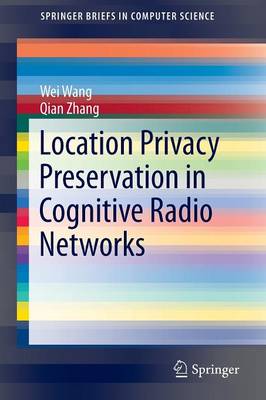SpringerBriefs in Computer Science
2 total works
Auction Design for the Wireless Spectrum Market
by Peng Lin, Xiaojun Feng, and Qian Zhang
Published 1 January 2014
This Brief introduces the wireless spectrum market and discusses the current research for spectrum auctions. It covers the unique properties of spectrum auction, such as interference relationship, reusability, divisibility, composite effect and marginal effect, while also proposing how to build economic incentives into the network architecture and protocols in order to optimize the efficiency of wireless systems.
Three scenarios for designing new auctions are demonstrated. First, a truthful double auction scheme for spectrum trading considering both the heterogeneous propagation properties of channels and spatial reuse is proposed. In the second scenario, a framework is designed to enable spectrum group secondary users with a limited budget. Finally, a flexible auction is created enabling operators to purchase the right amounts of spectrum at the right prices according to their users' dynamic demands.
Both concise and comprehensive, Auction Design for the Wireless Spectrum Market is suited for professionals and researchers working with wireless communications and networks. It is also a useful tool for advanced-level students interested in spectrum and networking issues.
Three scenarios for designing new auctions are demonstrated. First, a truthful double auction scheme for spectrum trading considering both the heterogeneous propagation properties of channels and spatial reuse is proposed. In the second scenario, a framework is designed to enable spectrum group secondary users with a limited budget. Finally, a flexible auction is created enabling operators to purchase the right amounts of spectrum at the right prices according to their users' dynamic demands.
Both concise and comprehensive, Auction Design for the Wireless Spectrum Market is suited for professionals and researchers working with wireless communications and networks. It is also a useful tool for advanced-level students interested in spectrum and networking issues.
Location Privacy Preservation in Cognitive Radio Networks
by Wei Wang and Qian Zhang
Published 28 January 2014
This brief focuses on the current research on location privacy preservation in cognitive radio networks (CRNs). Along with a review of the existing works, this book includes fundamental privacy models, possible frameworks, useful performance, and future research directions. It explores privacy preservation techniques, collaborative spectrum sensing, database-driven CRNS, and modeling potential privacy threats. Conflicts between database owners and unlicensed users can compromise location privacy, and CRNs are a means to mitigate the spectrum scarcity issue due to the increasing demand for wireless channel resources.
By examining the current and potential privacy threats, the authors equip readers to understand this developing issue. The brief is designed for researchers and professionals working with computer communication networks and cognitive radio networks. Graduate students interested in networks and communication engineering will also find the brief helpful.
By examining the current and potential privacy threats, the authors equip readers to understand this developing issue. The brief is designed for researchers and professionals working with computer communication networks and cognitive radio networks. Graduate students interested in networks and communication engineering will also find the brief helpful.

